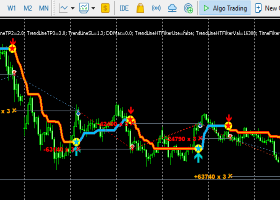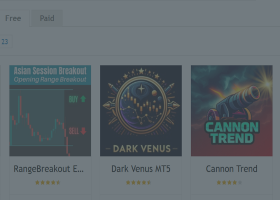The following are the expectations for today's FOMC October decision as provided by the economists at 20 major banks along with some thoughts on the USD into the event as provided by the FX strategists at these banks.
Goldman Sachs: We do not expect significant changes in the October FOMC statement. The statement is likely to acknowledge slower payroll gains while still describing growth as "moderate." We would view such an outcome as indicating that, despite the weaker-than-expected recent data, the leadership's baseline for liftoff remains December.
Morgan Stanley: The market appears to be expecting very little from this week’s FOMC meeting. Our economists are also not expecting any change in the statement. But markets are likely to become more data sensitive in the run-up to the December meeting, where our economists still anticipate liftoff.
JP Morgan: We are expecting no change (which is virtually a unanimous market view), so the statement will be key. The extent to which the statement persuades the market that Dec is a real possibility will likely be the key driver of USD price action.
Deutsche Bank: DB’s US economists expect the FOMC statement to be dovish one, with a more cautious tone relative to September, given the fact that the economy likely grew under 2% last quarter, and growth prospects for the current quarter are dimming in light of the sharp slowdown in the index of leading economic indicators. Moreover, the trajectory of consumer spending, the dominant driver of economic output, weakened intra-quarter (i.e., between July and September). The description of the labor market will surely have to to be toned down as well as the job market has meaningfully slowed over the past couple of months. The financial markets will treat the marking down of the Fed’s near-term assessment of the economy as dovish, thereby further reducing the probability of a December 2015 rate hike. And if the Fed determines that it really wants to raise rates this year, the likely tightening in financial conditions that would accompany such a desire would give policymakers pause. Therefore, we do not expect a rate hike until the March 2016 meeting at the earliest
Barclays: We expect the FOMC to hold its monetary policy unchanged as we continue to look for an initial rate hike at the March 2016 meeting. Its statement will likely contain only minor adjustments and retain the language “recent global economic and financial developments may restrain economic activity somewhat and are likely to put further downward pressure on inflation in the near term,” in our view.
Credit Suisse: Our US economics team expects the Fed to mark to market its statement to take account of recent softness in US economic data. But they also expect the Fed to introduce a sentence that perhaps downplays the significance of the spillover from weaker global conditions in order to leave open some optionality for a December rate. hike. If the FOMC statement pans out as our economists expect, given that market pricing is at 36% for a December rate hike and that the first hike is not fully priced in until June 2016, the USD would see a net positive reaction in our view. Otherwise unless the Fed is dovish to the point of ruling out a December rate hike entirely, which would probably lead to USD losses of up to 2% against the majors over coming days, we would expect only limited USD movement. Under these circumstances, we would look to fade resulting USD weakness given our expectations for easing from the ECB and possibly other central banks in December.
BNPP: We expect Wednesday’s FOMC statement to contain only modest dovish adjustments, with the Committee likely keen to leave open the possibility of delivering a hike in December if data improve. Given light long USD positioning as signalled by BNP Paribas positioning analysis, the USD should ride out the dovish adjustments relatively unscathed. Furthermore, monetary policy developments outside the US remain as important if not more important for near-term USD direction.
BofA Merrill: The October FOMC meeting is unlikely to deliver any major changes in policy or language, despite several Fed officials' recent attempts to characterize this meeting as "live". Without a forecast update or press conference scheduled, the focus will be on interpreting any revisions to the statement language. We expect relatively minor edits, however, and the interesting discussion won't appear until the minutes are released later in November. At this stage, we continue to see a relatively flat distribution for the timing of liftoff. December is our modal forecast for the first rate hike, but there is a significant chance that it could be later — depending on the upcoming data flow. No clear signals… once again "The FOMC has tried to dissuade markets from expecting any explicit signals about upcoming policy changes, emphasizing data dependence. As such, we anticipate no meaningful changes to the policy guidance language. That should not be read as a sign the Fed will not hike in December; rather that they are keeping all options open. We still see a significant chance that the FOMC will hike this year, but we likely will need to wait for subsequent speeches to get any clarity on the timing of liftoff.
Nomura: We don't expect the FOMC to change policy at today's meeting. At the moment, markets appear to assign about a one in three chance of “liftoff” in December. We do not think the FOMC will want to do anything at this point that reduces those odds. On the other hand, we do not think that the Committee is ready to send a strong signal that “liftoff” in December is likely. In the weeks after the October FOMC meeting we will get data that may help to clarify the outlook for the economy. Moreover, Yellen and other FOMC participants are scheduled to speak between the October and December meetings and therefore they will have the opportunity to clarify their intentions. Consequently, we do not think that the Committee is in a position to send a major signal about its policy intentions at this time.
RBS: RBS matches the consensus anticipating no change. With no press conference scheduled and no update to the Fed’s projections for growth, inflation, or ‘dots’, the bar was already set fairly high for any change in policy. International developments and domestic data released since the September decision are unlikely to have increased the Fed’s sense of “reasonable confidence” that inflation will rise over time. The fact that the FOMC will release only its post-decision FOMC statement this week severely limits the Fed’s ability to communicate a change in policy outlook. In this sense, less news is good news for the USD – the fewer changes the FOMC makes, the more positive for the USD at the margin. But any USD gains inspired by an unchanged statement may prove fleeting, as participants quickly look to the commentary from FOMC officials and the minutes following the decision for a more detailed look at how the Fed’s views on the outlook have evolved
Commerzbank: The Federal Open Market Committee (FOMC) members may have said time and again that they could hike rates at their October meeting, but the markets have not believed them. And with nobody expecting a rate hike today, we are won’t see one. The Fed certainly will not want to wrong-foot the markets in the current environment. However, it will have to become more explicit in its communications if it wants to hike rates at any time in the future. Nevertheless, it is unlikely that it will clearly signal a rate hike in December today, as doing so would undermine its mantra of “data-dependency”. The USD exchange rate will depend on what the Fed statement says on the recently weaker data. If the Fed believes that the US economy is still recovering nicely, the USD might trade somewhat firmer after the meeting, as the markets are currently overly cautious and predicting a rate hike only for March 2016. The Fed will certainly not sound even more pessimistic today. Rather, it might cautiously hint at approaching rate hikes. However, that will not be enough to justify EUR-USD to break out of its trading range of 1.08-1.15. The Fed’s glass is only half full – note: “half”.
SocGen: A policy move is really, really unlikely and I wouldn’t hold out much hope of a shift in the policy statement to encourage pricing of a December hike (by, say, removing the reference to international developments in then assessments of risks). Can Fed dovishness calm global markets and stop the dollar’s advance?. Oil price are one worry, and the precipitous fall in Bund yields another: 0.44% this morning. The Fed will have its work cut out tom prevent a slip in EUR/USD under 1.10 (towards 1.08) and that, in turn, will make the DXY chart look scary to technical analysts.
Credit Agricole: Today’s key release is the October FOMC statement. Nevertheless, we think this will pass as non-event so markets more likely to focus on data releases. This reflects a general view that the chances of a rate hike this week are remote. What’s more, there is no presser or forecast updates, leaving market participants to focus on the statement. This month’s statement is unlikely to provide much clarity about the outlook for the FOMC policy rate so markets are left clinging to data releases for signals about the state of the economy. Despite the limited clarity on the Fed outlook, our focus persists on the strength of the domestic economy. As such we stay of the view that the central bank is likely to tighten monetary policy in December. As consensus expectations seem to favour a March lift-off such an outcome suggests room of rising Fed rate expectations to the benefit of the USD.
BTMU: The release of the latest FOMC policy statement will be scrutinized closely to see if it is consistent with market expectations which have pushed back the timing of the first Fed rate hike into next year. The statement is likely to acknowledge that economic and labour market growth has moderated recently which may satisfy market expectations looking for the Fed to delay raising rates. However, it remains unlikely that the Fed will explicitly rule out beginning to raise rates this year leaving the decision data dependent in the coming months. The US dollar may weaken modestly following the release of the statement but it is unlikely to derail its renewed upward momentum. The Fed still appears relatively hawkish when overseas central banks are increasingly shifting to ease monetary policy. The US dollar’s recent rebound is unlikely to overly concern the Fed either as financial conditions have eased significantly since their last meeting in September.
CIBC: Our call for a December rate hike. But given a very divided Fed, expect the October meeting’s statement to be very wishy-washy in terms of anything that might signal the timing of their lift-off.
SEB: -Unchanged Fed policy and few/no new signals tonight. Fed has signaled its willingness to raise rates for a long time now and there was scope to deliver during the summer. However, the signal of tighter monetary policy one year ago: 1) strengthened USD, 2) pressured the oil price and 3) created the basis for a (commodity driven) EM crisis. The dependence on the USD that Fed has signaled is surprising. That China is slowing down is not as surprising. The US economy is chugging along, but the pace is not convincing and inflation expectations are still under pressure. To make matters worse, the ECB has made life more difficult for the Fed.
UOB: Given that any expectations of an interest rate move have now evaporated and that there is no press conference scheduled after the event, there is a great deal hanging on the accompanying statement, which we think will likely be more downbeat than that issued in September in light of recent activity and inflation data, but not sufficiently so to rule out the possibility that the Fed could still begin tightening at the Dec meeting (our view).
Danske: The FOMC meeting this week is unlikely to provide us with much new information. We expect to receive a statement but no updated projections or press conference. Along with consensus, we expect no change in policy at the meeting. We believe the Fed wants to keep all doors open at this point and will try to signal that a December rate hike is an option but by no means given. If markets keep still after the statement, we think the Fed can declare its mission accomplished. The tone on recent economic developments is likely to be more downbeat than in September but global economic and financial developments should have become less of a risk. In our view, the forward-looking part of the statement is likely to be kept broadly unchanged, as the Fed awaits more data before changing its view on the outlook.
TD: Without updated economic projections and an accompanying press conference, the bar for action at the October FOMC meeting is much higher than in September and December. Only if the economic data had improved materially versus the Fed’s updated expectation outlined in September would a hike this week be warranted. Instead, the exact opposite scenario has unfolded.
Westpac: There is an almost nil probability of a rate hike occurring at the October meeting, with the December meeting instead the focus. Expect the October statement to carry a very similar tone to that of September, with the FOMC eagerly awaiting the release of Q3 GDP (the day after the meeting) as well as further updates on jobs and inflation.


